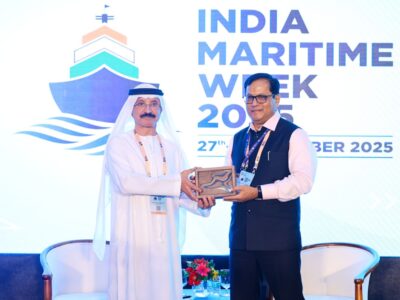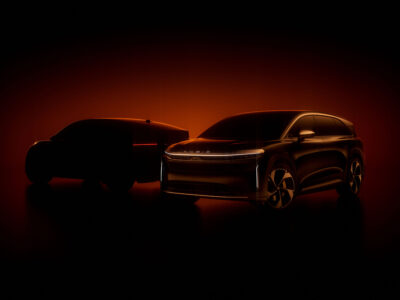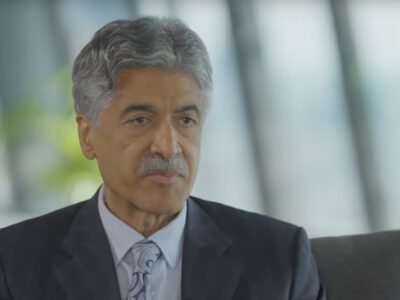The Middle East is a unique environment for the automotive industry. Where the North American, European and Australasian markets have a number of similarities and, subsequently, transferable strategies, the Middle East requires a full tactical rethink. The distinctive characteristics of the marketplace must be taken into account when devising this strategy. The most relevant of these features to the private car industry are the incessant heat, poor road infrastructure and relative lack of public transport, coupled with the cheap price of fuel and greater disposable income.
The heat of the desert, especially in the height of summer, means that most people want to move seamlessly from their air-conditioned home to their air-conditioned car to their air-conditioned destination. Even despite the poor state of the roads and traffic problems that permeate the area, local residents take to their cars. Although the current lack of a good public transport system is a sound reason for using private transport, the projected uptake of metro and train initiatives is uncertain as climate conditions will remain problematic. Regardless of how encompassing a light-rail system is, commuters will still have to walk to their local station and wait for the next train. Plans are in place for air-conditioned walkways to lead up to the new metro stations in Dubai but braving the relentless heat and breaking the habit of jumping into a waiting car will be a big challenge.
The car in the Middle East is less of a tool, as it might be in Europe, and more of an expression of your personal values and personal gain.
General trends can be observed in Gulf customers, not just because of the inclement weather and traffic conditions. As Phil Horton of BMW Middle East says; “We have in the region what we call the inverted triangle.” In the more traditional markets, the lower end products sell in the highest numbers, tapering towards the upper end of the market. Conversely, in the Gulf States the highest sales levels are amongst the premium product with fewer people choosing to purchase lower-specification cars.
He cites several reasons for this but the most telling is the taste of the Middle Eastern customer; here, the car is much more of a status symbol. “The car in the Middle East is less of a tool, as it might be in Europe, and more of an expression of your personal values and personal gain. Many of our customers aren’t afraid to display that,” Horton continues. “They have the disposable income to have the best. The market is very much, in our segment, driven by bigger cars and more powerful cars.” Ulrich Urban of Chinese car firm Haima agrees with this observation: “The car remains a status symbol and will stay this way. A car can say what sort of person you are.”
While the affluence in the Middle East continues, those in the automotive industry do not see this preference changing. “People will not give that up until they are really pinched in their income and I don’t see that happening,” Urban says. The penchant for luxury, generously-proportioned cars will endure.
The structure of the car industry itself is very different here too. “The GCC is very different, not only are we talking about 14 countries being in the Middle East region, two of those countries are currently closed because they are Iraq and Afghanistan. The structure that we have in the other 12 is that each one is run by an independent importer rather than what we call a national sales company structure.” This means that the relationship between car manufacturer and dealership owner is more important and can create differences that require more careful management to ensure a consistent brand image. Moreover, the Middle East forms a very densely packed market with millions of cars on the road in a small area. Though this is arguably the root of the traffic problems, it also fosters a healthy economy for dealers in the area.
Two main themes kept cropping up in discussions with each of the automotive representatives: The Gulf market is becoming increasingly aware of environmental issues affecting the industry and the products available for sale here ought to be targeted to the specific requirements of the local customer.
Environmental Considerations
Since the discovery of oil in the region, the Gulf States have embraced the easy availability of cheap energy. This has been positive for the car industry and is one of the reasons that gas-guzzling SUVs remain a popular choice. It is a different story in the European and American markets where government-imposed environmental taxes and public opinion have turned against less efficient cars. “The big-engine cars don’t sell as well in Europe because of fuel economy, emissions and the fact that, in some parts of Europe particularly, there’s almost been a bit of a backlash against driving very big engine cars,” says Horton. “There is an ever increasing trend in Europe and in some parts of North America towards customers being much more environmentally conscious.”
In these regions this issue has led to the development and sale of more environmentally – friendly cars. Improvements have seen the introduction of cars with improved fuel efficiency or hybrid engines. This movement has not been noticed so much in the Gulf but Horton reports a changing attitude: “What’s interesting for me being in charge of the Middle East is that although it’s not a big issue for us at the moment, we are starting to see the first signs, particularly in cities like Dubai and Abu Dhabi where congestion is quite severe, of environmental awareness.”
The movement is not just attributed to a drive by expatriate residents familiar with European and North American feeling. Instead, astute guidance by Arab leaders is the main cause. A watchful eye on global trends has meant that Arab leaders recognise the importance of global warming concerns and the need to keep pace with the rest of the world on the matter. “There’s a growing realisation that, even though you’ve got the cheap fuel, you can’t stand outside the rest of the world which is driving Kyoto and other such schemes. It’s bad PR apart from anything else. I think those initiatives will increase and I think that we will see them ripple down quite quickly into the automotive market,” Horton says.
Arab leaders recognise the importance of global warming concerns.
Given that car companies see popularity of big cars enduring here, it is unlikely that these growing environmental considerations will lead to the skewing of sales towards smaller, hybrid cars. So how does the automotive industry see the market evolving in the coming years? Attention seems to be directed more at the powering of the cars than to design and size alterations. “The propulsion methods and the emissions that are made, they will certainly have to change, even in the Middle East where there is enough cheap fuel to last for another 100 years,” Horton asserts.
Bio-fuels are an improbable move for the Gulf given the abundance of cheap hydrocarbon-based fuels and difficulty of growing crops in a desert environment. Despite the beginning of an environmental awareness, it is undeniable that the convenience of hydrocarbon fuels will preside over the car industry for the foreseeable future. Control of the lion’s share of world oil reserves and the correspondingly minimal transport costs mean that a switch to bio-fuels (which would have to be imported) is unlikely. The hydrocarbon reserves will not last forever but with the improved extraction and refining methods, the Gulf market will stay faithful to this energy source for a while yet. The region is playing catch up in the environmental stakes so the primary contender for diversification is the hydrogen fuel-cell, currently under development. As a combustion engine, the transition from hydrocarbon to hydrogen-based fuels would be relatively simple and avoid drastic vehicle redesigns, allowing customers to keep hold of their preferred large cars.
Modifying the Product Portfolio
Organisations across all sectors are seeing the advantages of tailoring their product portfolios to each area that they operate in. “It is very clear that the consumer all over the world now is looking for a car that is exactly tailored to his particular lifestyle,” says Horton. Different issues carry different weight depending on where in the world you are. In the MENA region, the two most substantial issues are safety and luxury.
Roads in the area are less regulated than in Europe and North America which makes road traffic accidents more commonplace. Though this is being tackled by government agencies it means that safety is a key consideration when customers are choosing cars, one of the factors that drives the popularity of SUV-style vehicles. Mohammed Bennani, Managing Director of Renault GCC, supports this: “Safety is a growing factor in the region. That is one of the issues that we are working on.”
The variations in transport infrastructure affect choices in other ways too. As space is not so much of an issue (with wider roads and ample parking provisions), bigger cars are in greater demand than anywhere else. Illustrating this point, Horton points to some BMW statistics; the company offers the 7 series in both long and short wheel-base models. In Europe, around 95% of sales are of the short-wheel base model whereas in the Middle East the reverse is true with approximately 95% of customers preferring the longer wheel base.
Consumer preferences are being observed and alterations made to the product portfolio accordingly. Renault has plans afoot for such modifications: “We will bring the designs people are expecting. We may have cars sold in the region which will not be sold in other regions instead of just bringing European cars on sale here.” Reflecting this intention, BMW have just announced at the Dubai International Motor Show their commitment to two new concept cars that they anticipate will be popular in the area. In line with local consumer preferences, one is a sporty model and the other is a cross between an SUV and a coupe.
Not only will the models on offer be altered, Horton imagines that there will be more subtle changes in the BMW range, saying, “I think in the future we will tailor models on a more regional basis, particularly the interior of the cars. The Middle Eastern customer wants something more overtly opulent.” A prime means of doing this is making a different selection of interior trims available to suit the Arab palate (away from the black and silver European tastes).
In sum, concerns have been raised of late about the future of the private car, notably in relation to environmental issues. In other developed countries investment is being made into public transport systems with corresponding tax penalties for continued use of private vehicles. The rising price of oil and public anxieties about the effects of global warming have given weight to such moves. In the Middle East however, there are different priorities. Though green initiatives are coming into play the car is and shall continue to be king. As Bennani succinctly says, “The top management believe that this region is one of the regions where the future of automotive is because of the growth, because of the people. The people here love cars; they love big cars, they love big engines, they love sports cars.”







